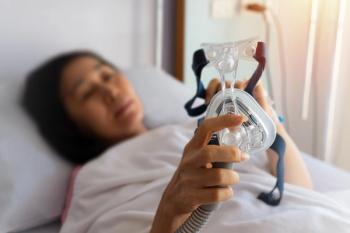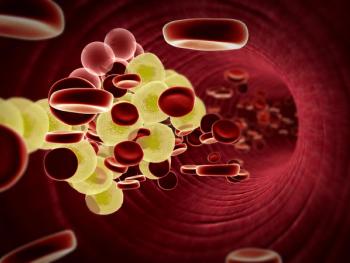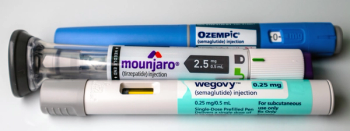
RPM Is Effective for Patients With Cancer During the Pandemic
The results of a pilot program investigating the efficacy of remote patient monitoring for patients with cancer showed that it helped to keep high-risk individuals out of the hospital.
A pilot program evaluating remote patient monitoring (RPM) for patients with cancer who were either persons under investigation (PUI) for COVID-19 infections or COVID-19 positive with mild or no symptoms found that participants effectively engaged with the program’s data reporting system at least once a day 97.2% of the time, according to a presentation at the Association of Community Cancer Centers 38th National Oncology Conference.
The RPM pilot program, conducted at Inova Health System, enrolled 26 patients who were educated on program parameters by advanced practice providers (APPs) and provided with RPM packages. These packages contained an automatic blood pressure cuff, an oral thermometer, a finger pulse oximeter, and a configured iPad to enter vital results.
Participants were asked to conduct a vital sign assessment 3 times per day, recording temperature, heart rate, blood pressure, and oxygen saturation. They were also asked to conduct a self-assessment the same number of times, which asked participants if they felt better, worse, or the same as the previous day, as well as whether they were experiencing shortness of breath.
Participants were also given access to a password-protected patient dashboard, monitored by APPs 12 hours a day, 7 days a week. If a participant recorded an issue during nighttime hours, they were directed to an on-call provider. Patients who reported shortness of breath prompted an alert in the system, and patients were called once a day for a check-in with an APP regardless of clinical status.
“If the APP saw any data [in the dashboard] that concerned them, they would call the patients and bring them into our COVID-19 clinic to get them evaluated,” said Nancy Bowles, MHA, BSN, RN, OCN, CRNI, NEA-BC, CPC, CHONC, vice president of nursing at Inova Schar Cancer Institute in Fairfax, Virginia, during the presentation. “We could do some IV [intravenous] therapy there—a lot of hydration, blood products, things like that—and treat the patients and try to keep them out of the hospital.”
According to the investigators, the program saw high overall compliance and engagement, with patients entering data at least 1 time per day 97.2% of the time and entering data all 3 times 65.7% of the time.
“Twenty-three [patients] were monitored at home without requiring hospitalization,” Bowles said. “This is 88% of our patients. Two patients were admitted for non–COVID-19–related issues. One patient was admitted with an upper respiratory infection and ended up testing negative for COVID-19 twice and recovered with antibiotics.”
The program duration was based upon the needs of participants. PUIs remained in the program until either their COVID-19 test results came back negative or the patient was no longer symptomatic. Patients who tested positive for COVID-19 remained in the program until they received 2 negative COVID-19 tests 24 hours apart and were no longer symptomatic.
The presenters listed several limitations of the program, including language interpretation, technological literacy, a lack of electronic medical record integration, and reimbursement challenges.
“For our iPads, we were only able to have those in English and Spanish, although we did have patients that could potentially have benefited from additional languages as well,” said Laura Matthews, MBA, MPH, vice president and administrator at Inova Schar Cancer Institute, during the presentation. “[A]s we think about the use of RPM, [we need to make] sure that we have that availability of enough translation and enough languages to make this helpful for our patients.”
Looking to the future, the presenters anticipate that RPM may be used for outpatients with low-risk febrile neutropenia, patients with leukemia during consolidation treatments, and tracking vitals, weight, and calorie counts for patients in chemoradiation.
“Having on-demand access to patient information for these patients, it’s incredible,” Matthews said. “I think the sky is the limit in terms of the number of ways that we can continue to use remote patient monitoring over time.”
REFERENCE
Matthews L, Bowles N. Remote monitoring of patients with cancer during COVID-19. Presented at: Association of Community Cancer Centers 38th National Oncology Conference; November 9-10, 2021; virtual.
Newsletter
Stay informed on drug updates, treatment guidelines, and pharmacy practice trends—subscribe to Pharmacy Times for weekly clinical insights.

















































































































































































































